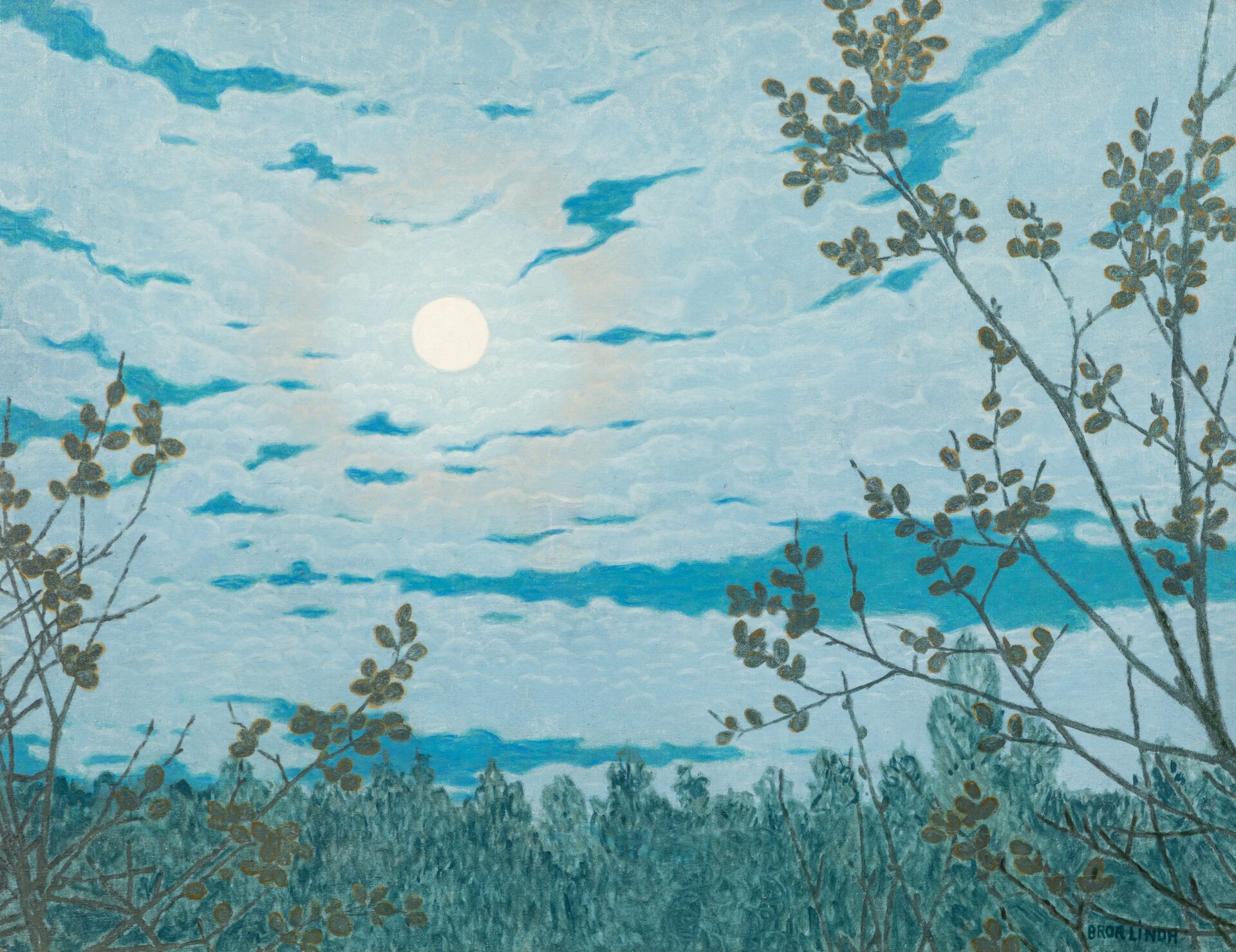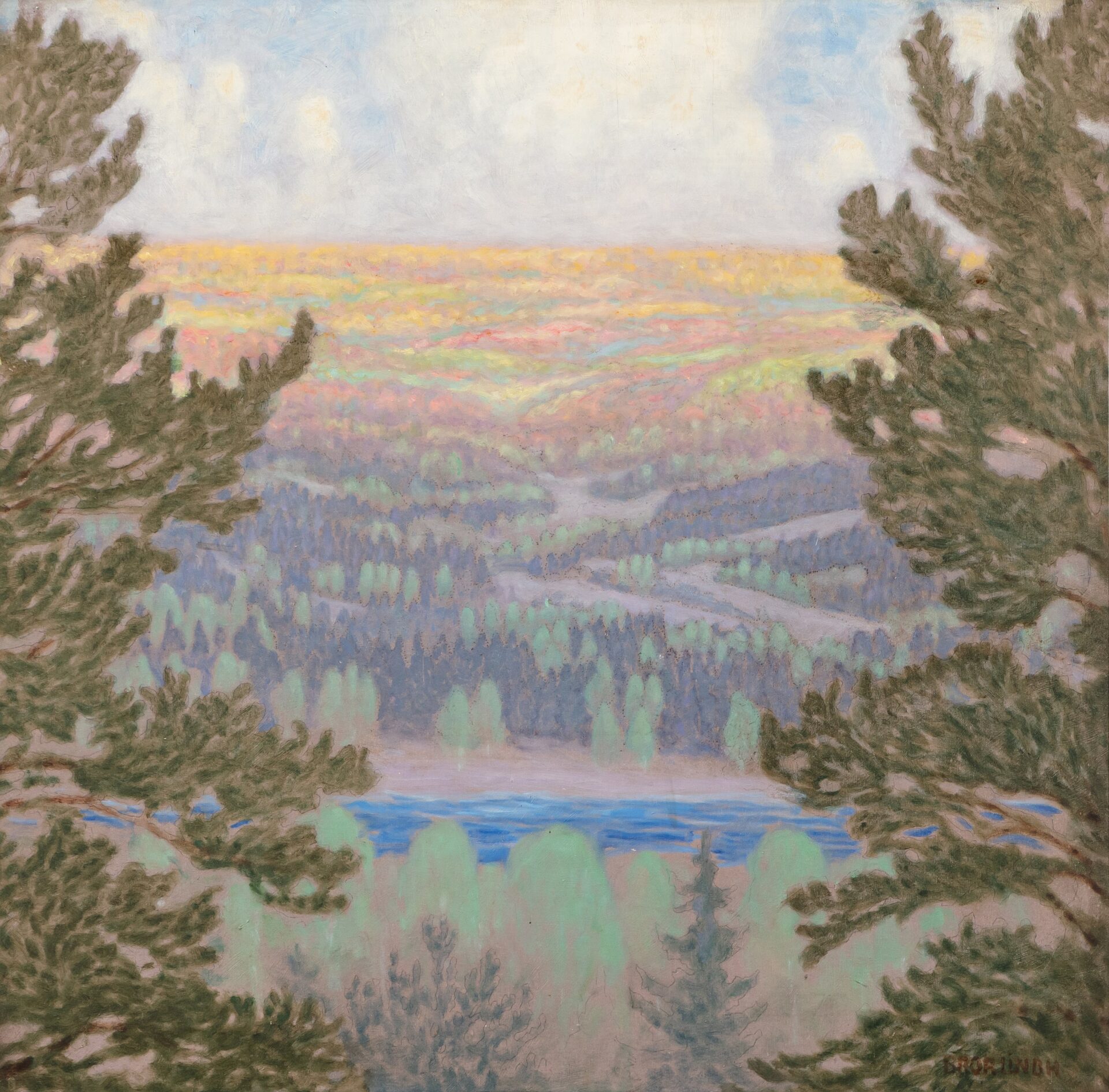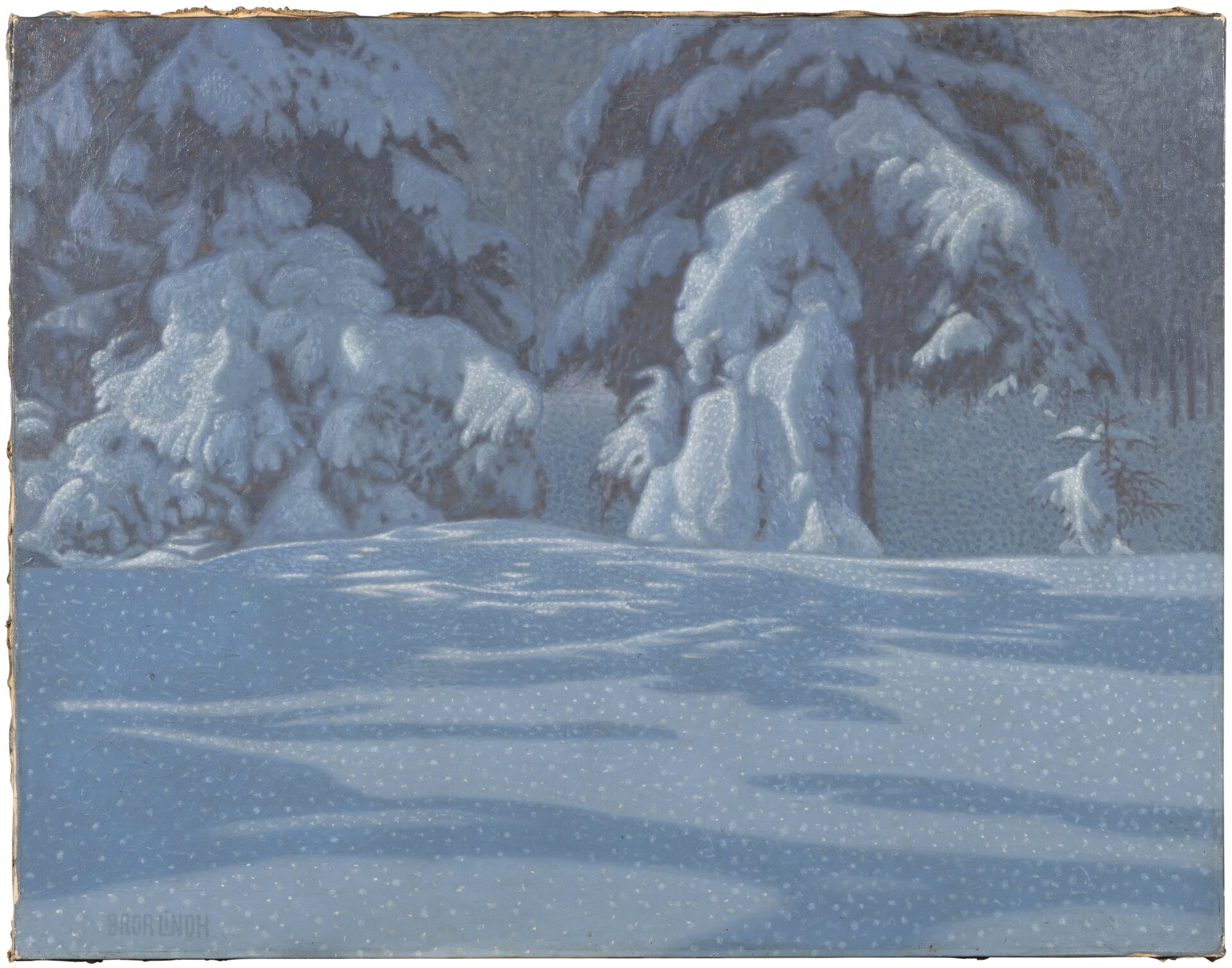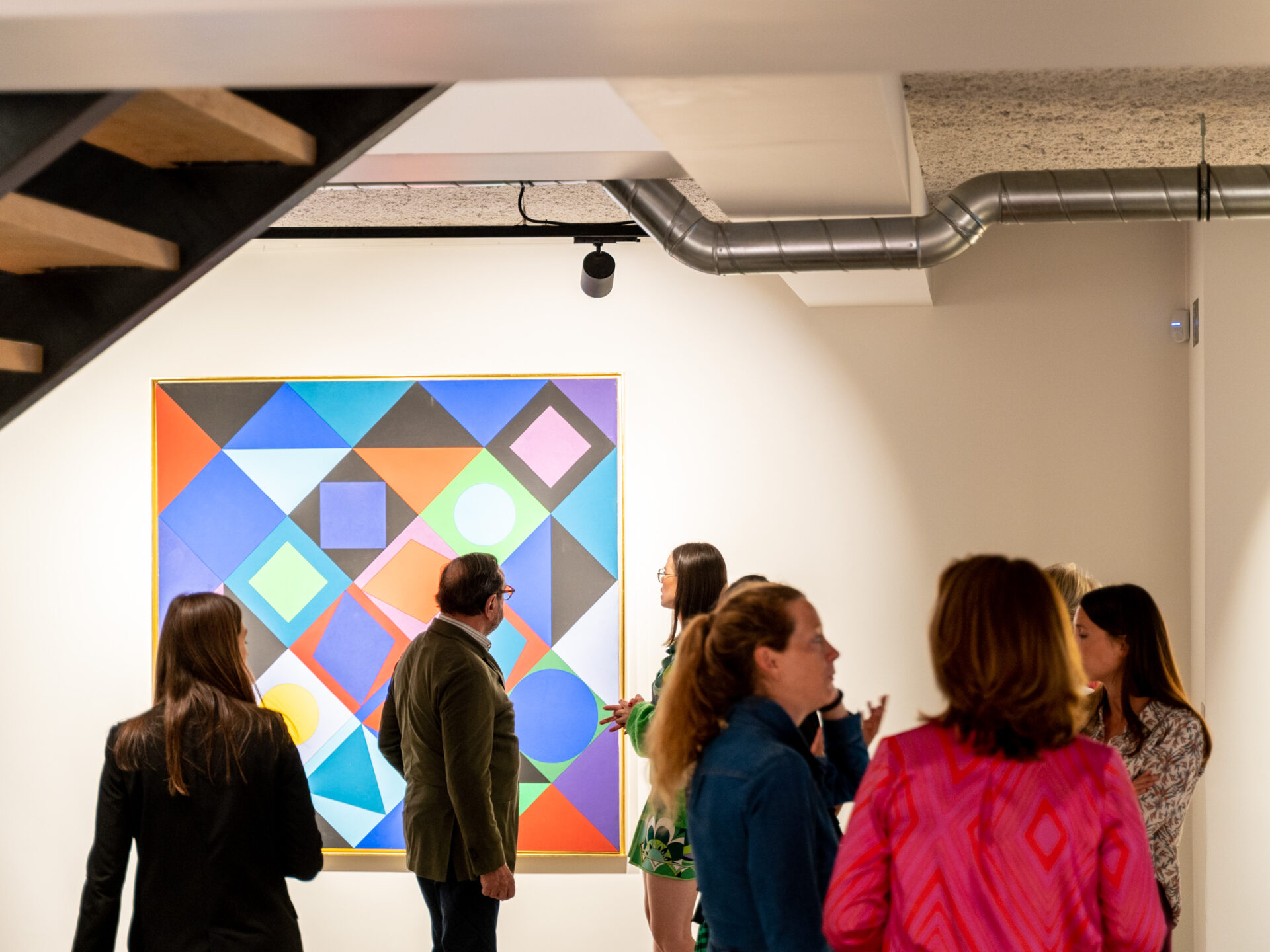The exhibition, entitled “Bror Lindh (1877-1941): Lights from the North,” directly transports us to the cold lands of Sweden, immersing us in the core of the painter’s life.
Born in 1877 in Värmland County, Sweden, Bror Lindh grew up in an artistic family. Trained by his father, Carl Jansson, he then received academic training from Gustaf Fjæstad, a Swedish painter specializing in depicting winter landscapes.
Bror Lindh then worked as a decorative painter in the city of Arvika but finally decided to join the Stockholm Swedish Artist Association Painting School.
Tired of romantic deceptions, Bror Lindh finally decided to leave the capital to return to Värmland, withdrawing from society to live in poverty.
Bror Lindh’s artworks demonstrate a significant influence from Fjæstad’s work, although Bror Lindh’s style might not be as photorealistic as his mentor’s pieces. However, we can find strong affiliations with Stefan Johansson’s meticulous watercolors.
Furthermore, Bror Lindh’s precise way of painting is justified by rigorous and thrifty use of his materials due to his difficult economic conditions. Through his judicious use of painting, Bror Lindh showcases a real mastery of colors and light, especially in his pieces centered on the northern lights.
As early as the 1920s, Bror Lindh ran counter to society’s trends in order to completely withdraw himself from any social life, returning to the Swedish countryside, although his artworks were exhibited at the same time in regional museums in Sweden. Bror Lindh died in 1941 at the age of 64.
Many of his artworks were subsequently exhibited by prestigious institutions such as the Stockholm Moderna Museet (open since 1958).
This exhibition is open to the public until 2nd February, from 10 AM to 5 PM, allowing us to admire, for a few more days, the underlying synthetic style and mystical aesthetic of Bror Lindh’s depictions of northern landscapes.



